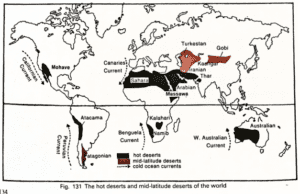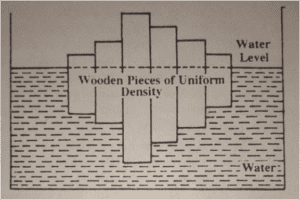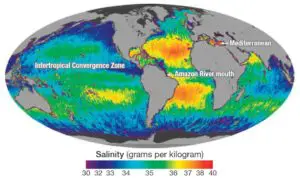Table of Contents
Understanding the Difference between Corrosion and Corrasion
As a teacher, it is essential to provide comprehensive knowledge to your students. Today, let’s explore the difference between two terms that may appear similar but have distinct meanings and implications – corrosion and corrasion.

Difference between Corrosion and Corrasion
Corrosion and corrasion are distinct processes that affect materials and structures differently.
Corrosion
Corrosion refers to the gradual destruction of materials through chemical or electrochemical reactions with their environment. It is a common phenomenon observed in various substances.
There are several ways to prevent or mitigate corrosion, including the use of protective coatings, cathodic protection, corrosion inhibitors, and appropriate material selection and design.
Corrosion can occur in different forms, such as uniform corrosion, pitting corrosion, crevice corrosion, galvanic corrosion, and stress corrosion cracking. Each form has its own characteristics and effects on materials.
Examples of Corrosion
An interesting example of corrosion is the rusting of iron, which occurs when iron reacts with oxygen and water. The reddish-brown substance called rust is the result of this corrosive process.
Corrasion
- Corrasion is a geological and geomorphological process that involves the erosion of the earth’s surface due to the friction caused by particles transported by water, wind, ice, or gravity.
- Corrasion plays a significant role in shaping various landforms, including valleys, canyons, and cliffs by removing rocks and soil from their original locations.
- Moreover, corrasion can impact the stability and integrity of both natural and man-made structures in the affected areas.
Significance of Understanding Corrosion and Corrasion
Gaining knowledge about corrosion and corrasion is crucial for several reasons, including:
- Preserving and maintaining the integrity of materials and structures.
- Ensuring the safety and longevity of infrastructure.
- Avoiding financial losses caused by material degradation and replacement.
- Developing strategies to combat or mitigate the effects of corrosion and corrasion.
- Contributing to advancements in material science and engineering.
Effects and Consequences
The effects of corrosion and corrasion can have significant impacts on our surroundings and daily lives. Some notable effects include:
- Reduced structural integrity of buildings, bridges, and other infrastructure.
- Inefficiency and malfunctioning of machinery and equipment.
- Decreased lifespan of vehicles and appliances.
- Harmful environmental consequences due to the release of corroded or eroded materials.
- Increase in maintenance and repair costs.
Pros and Cons
While corrosion and corrasion have negative implications, it is important to note that there can also be positive aspects:
Corrosion
Pros:
- Natural occurrence in some processes, such as the rusting of iron.
- Allows for the transformation and recycling of materials.
- Serves as a basis for electrolysis and other important chemical reactions.
Cons:
- Destruction and degradation of materials.
- Costly repairs and maintenance.
- Environmental pollution.
Corrasion
Pros:
- Shapes and forms various landforms, contributing to the diversity of our planet.
- Allows for the formation of natural resources, such as sedimentary rocks.
Cons:
- Erosion of valuable soil.
- Compromised stability of structures and landscapes.
- Potential for landslides and geological hazards.
Fun Fact
Did you know that the Great Barrier Reef, one of the world’s most spectacular natural wonders, is threatened by both corrosion and corrasion? The reef experiences coral bleaching due to changes in water quality (corrosion), and its structure is eroded by waves and currents (corrasion). This emphasizes the importance of understanding and addressing these processes to protect the fragile ecosystem.
In conclusion, corrosion and corrasion may sound similar, but they have distinct meanings and implications. By comprehending these phenomena, we can make informed decisions to prevent damage, ensure safety, and preserve our environment.
Mutiple Choice Questions
1. What is the definition of corrosion?
A) The erosion of the earth’s surface by particles transported by water, wind, ice, or gravity.
B) The gradual destruction of materials by chemical or electrochemical reactions with their environment.
C) The shape and formation of various landforms through erosion.
D) The impact on stability and integrity of natural and man-made structures.
Explanation: Corrosion refers to the gradual destruction of materials due to chemical or electrochemical reactions with the environment.
2. How can corrosion be prevented or mitigated?
A) Using protective coatings, cathodic protection, corrosion inhibitors, and proper material selection and design.
B) Shape and formation of various landforms through erosion.
C) Impact on stability and integrity of natural and man-made structures.
D) Erosion of the earth’s surface by particles transported by water, wind, ice, or gravity.
Explanation: Corrosion can be prevented or mitigated by adopting measures such as using protective coatings, cathodic protection, corrosion inhibitors, and making appropriate material selections and designs.
3. What is an example of corrosion?
A) Erosion of the earth’s surface by particles transported by water, wind, ice, or gravity.
B) The gradual destruction of materials by chemical or electrochemical reactions with their environment.
C) The shape and formation of various landforms through erosion.
D) Impact on stability and integrity of natural and man-made structures.
Explanation: Rusting of iron is an example of corrosion, where the metal undergoes a chemical reaction with oxygen and water, leading to its gradual destruction.
4. What is the definition of corrasion?
A) The erosion of the earth’s surface by particles transported by water, wind, ice, or gravity.
B) The gradual destruction of materials by chemical or electrochemical reactions with their environment.
C) The shape and formation of various landforms through erosion.
D) The impact on stability and integrity of natural and man-made structures.
Explanation: Corrasion refers to a geological and geomorphological process that involves the erosion of the earth’s surface by the friction of particles transported by water, wind, ice, or gravity.
5. How does corrasion impact the environment?
A) The erosion of the earth’s surface by particles transported by water, wind, ice, or gravity.
B) The gradual destruction of materials by chemical or electrochemical reactions with their environment.
C) The shape and formation of various landforms through erosion.
D) The impact on stability and integrity of natural and man-made structures.
Explanation: Corrasion can shape various landforms, such as valleys, canyons, and cliffs, by removing rocks and soil. It can also impact the stability and integrity of natural and man-made structures in the affected areas.
Brief Summary | UPSC – IAS
Corrosion and corrasion are two different processes that affect materials and structures. Corrosion is the gradual destruction of materials through chemical or electrochemical reactions with the environment. It can be prevented or mitigated through various methods. Examples include rusting of iron. On the other hand, corrasion is a geological process that involves the erosion of the earth’s surface through the friction of particles transported by water, wind, ice, or gravity. It shapes landforms and can impact the stability and integrity of structures.



